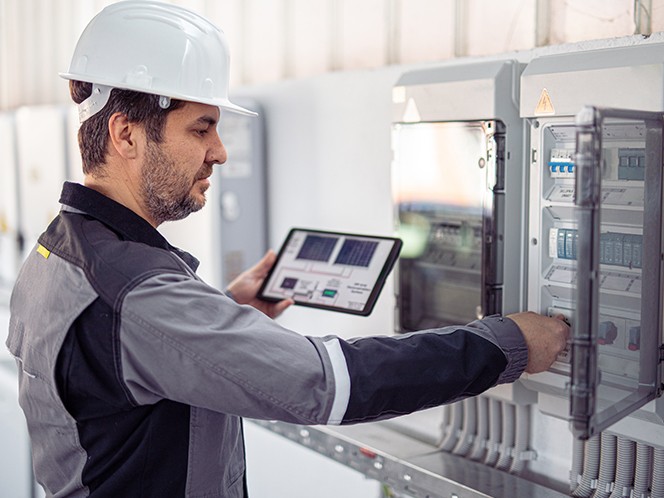Equip your people to drive transformation—digitally
AVEVA's connected worker solutions leverage our cloud-based platform, mobile applications, and immersive technologies to help organizations bridge knowledge gaps, streamline operations, and foster continuous improvement.
- AVEVA™ Teamwork enables real-time collaboration, training, and knowledge sharing.
- AVEVA™ Work Tasks digitizes workflows, ensuring consistent execution and compliance.
- Augmented reality solutions provide step-by-step visual guidance, reducing errors and improving safety.
- AVEVA Mobile Operator equips field personnel with mobile access to procedures, equipment data, and task management.
Together, these technologies build a connected, agile workforce ready for today’s challenges.

Radical collaboration
Empower global collaboration and knowledge sharing to drive faster problem-solving and continuous learning.

Faster problem-solving
Resolve issues quickly with instant access to proven fixes, peer knowledge, and mobile microlearning.

Operational consistency
Standardize task execution with digital workflows—online or offline—for consistent results across every site.

Visual guidance and remote assistance
Use visual tools and remote support to digitize inspections and drive safer operations.
10%
reduction in energy consumption at Pima County Regional Wastewater Reclamation Department
Connected worker use cases
- Use Case 1
- Use Case 2
- Use Case 3

Collaborate and resolve issues in real time
Empower frontline workers to resolve issues quickly through real-time collaboration, shared knowledge, and embedded training

Digitize, automate, and standardize task execution
Replace paper-based processes with mobile workflows to improve operational consistency, traceability, and compliance.

Guide workers visually with AR
Deliver real-time visual instructions and remote support to reduce errors and enhance safety in complex tasks.
The future of connected work
Rethinking HMI/SCADA for a digitally connected workforce
Read the white paper to learn what analysts identified as crucial efficiency, productivity, and agility drivers.
Enable operational agility
Discover how connected worker programs became central to digital transformation—fast-tracked by the pandemic
FAQs
AVEVA’s connected worker solutions are a suite of digital tools designed to empower industrial workers by providing real-time access to information, enhancing collaboration, and improving operational efficiency. By integrating technologies such as augmented reality, mobile solutions, and cloud-based data access, the solutions enable workers to make informed decisions, reduce downtime, and adapt quickly to changing conditions.
The platform facilitates knowledge transfer and continuous learning through features like experiential training and ongoing performance support. By leveraging technologies such as XR (extended reality) and AI in the cloud, new workers can quickly acquire the experience of seasoned employees, thereby accelerating onboarding and reducing the impact of workforce turnover.
The platform encompasses various tools, including:
- AVEVA Teamwork: Facilitates real-time collaboration and knowledge sharing among workers.
- AVEVA Work Tasks: Digitizes workflows and standard operating procedures for consistent task execution.
- AVEVA augmented reality solutions: Provide visual guidance and remote support through AR overlays.
- AVEVA Mobile Operator: Enables field personnel to access operational data and perform tasks via mobile devices.
These tools are designed to work cohesively, ensuring seamless integration and a unified user experience across various operational scenarios.
A day in the life of a digital twin connected worker
Follow two workers—one connected, one not—and discover how digital twins impact daily operations.
